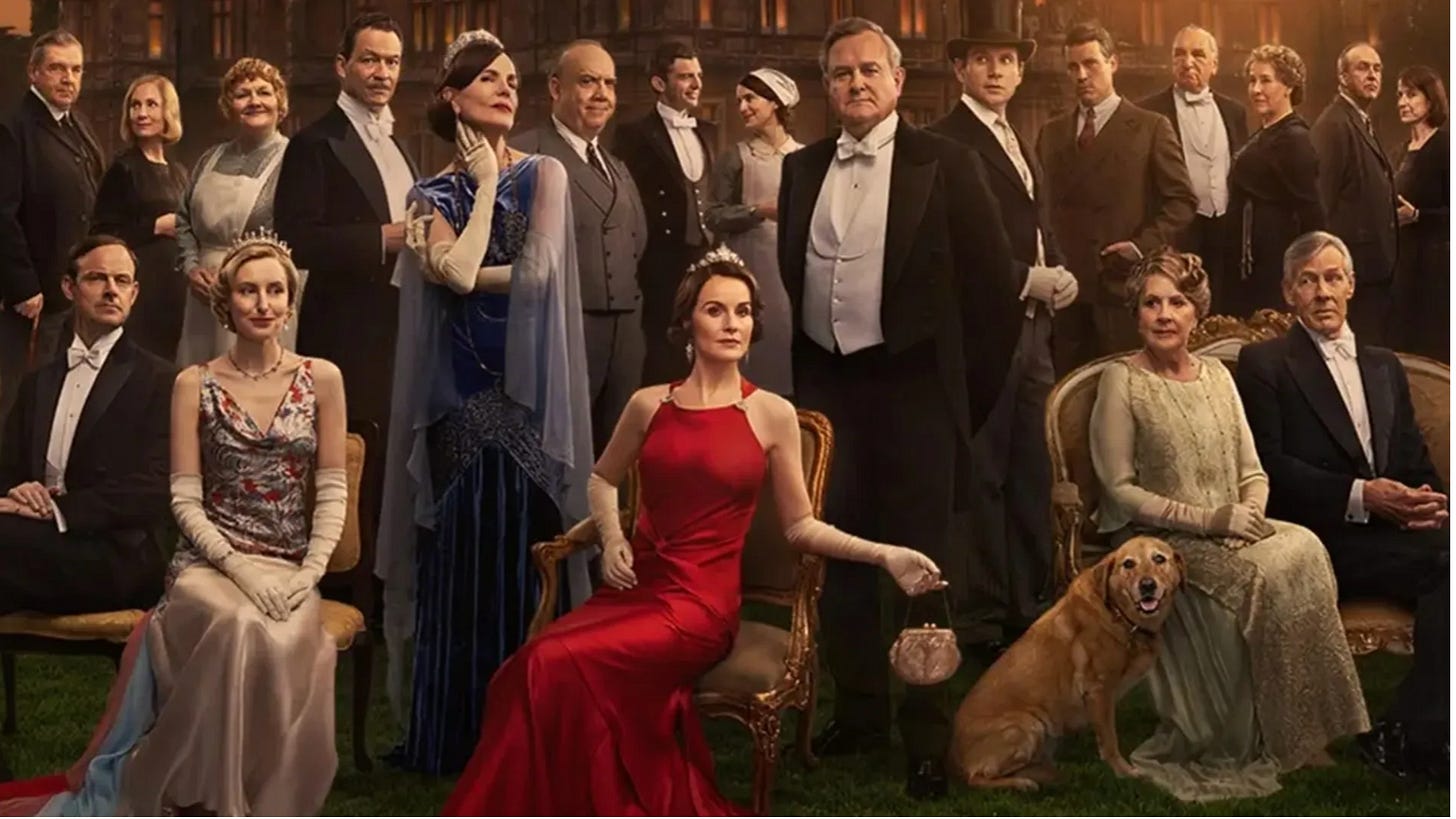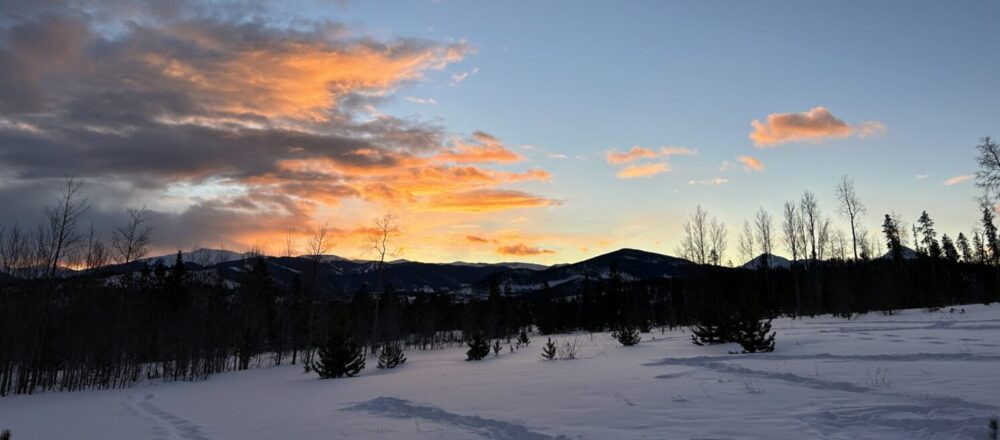Downton Abbey lets us escape for a while, but real history won’t.

After feeling oppressed by all the ugly sturm und drang of our American life in the last week or so, it was a relief this weekend to enter a world where, as one character put it, the past is a far more comfortable place than the present.
I refer, of course, to a telling comment by character Harold Levinson, an American relative visiting Downton Abbey in that delightful bit of Anglophilic fluff that aired on our local movie screen.
What a glorious escape it was for a couple hours.
Oh, to live in a world of glittering silver place settings, gracious conversation with men in tuxes and women with gloved hands in stunning open-backed gowns, all in a stone behemoth of a home that one’s family has owned for centuries. Oh, to sport top hats and cravats at Ascot, where one could chat amiably – if deferentially – with royalty, with whom one might be related in some distant way. Oh, to be tended by manservants and ladies’ maids with meals served on strenuously polished platters in wondrous halls bedecked with old family portraits and marvelous tapestries.
Of course, it was only a privileged few – relatively speaking – who enjoyed such delights in real life. Their servants lived in far less cozy quarters and, simply by accidents of birth, were fated to call their “betters” m’lady or m’lord. And the vast majority of their countrymen lived in various states of unpleasantness or worse— sometimes grinding poverty—while they organized their oh-so-tiring visits to the great and glorious homes of London for the whirl of the social season.
To enjoy “Downton Abbey: The Grand Finale” and the earlier installments, one just has to put reality on a shelf. One must imagine that he or she was part of that upper crust, not the downstairs folks. Not that their lives in the fictional kitchens and stables were all that bad. The lord and lady, naturally, were kindly sorts who had at heart the best interests of all in the county, the domain they were born to oversee.
Downton, of course, is a lovely bit of cotton candy. It paints an England that is fading, being dragged into the middle of a 20th century that is a far less pleasant place. “They say America is the future and England is the past,” the Levinson character says. “Sometimes it’s more comfortable in the past.”
Judging by the ample amount of gray hair in our surprisingly crowded theater at our afternoon matinee, many of the movie’s fans might second that thought. “Downton” offers a cozy world beloved by those of a certain demographic, a group of which many of us, reluctantly perhaps, are part. The series aired for six seasons on TV in the U.S., beginning in early 2011, a time before the Trump era, a time when for many of us the past was indeed far more comfortable than the present. There were also movies in 2019 and 2022 that could remind us of the halcyon days before 2016.
As it happens, this installment of the Crawley family saga is set in 1930. The Depression hasn’t done its nastiest work yet (though the family’s American branch did lose a bundle to a con man after the crash) and the stunning Lady Mary (heartthrob Michelle Dockery) and her father, Lord Grantham, are a bit stressed at how to keep the estate together without selling off too much. And, of course, the next world war is a long way off. Still, change is afoot for the royals and that does give the Crawleys a lot of worry.
As The New York Times put it: “.., the movie delivers exactly what ‘Downton’ fans want: yummy photography … stunning set pieces and Lady Mary trying on as many fabulous frocks as possible. It will be another 15 years before the rise of socialism pierces the aspic of aristocracy; for now, the worst that can happen to the Crawleys is being ousted from a ball.”

For longtime fans, it’s a delight to immerse oneself in this world, a place facing plenty of threats but still a realm of comfort and warmth where social roles are rigid but, in this imagined reality at least, are not all that constricting. The upstairs and downstairs folks look after one another in a mutual way. And there’s much reassuring about that old stone pile of a family manse, which had stood through centuries of turmoil. Yes, divorce among the upper classes is intolerably scandalous, but even that proves surmountable for our redoubtable Lady Mary.
“With its mix of old characters and new, worldly upheaval and small-town drama, [writer Julian] Fellowes illustrates what ‘Downton’ has always done best, which is a social examination of how much things have changed and how they haven’t changed at all,” the Los Angeles Times says.
Fluffy, unrealistic and comically so, yes. But what a delightful ride it is, what a sweet fantasy.
“It’s no surprise that ‘The Grand Finale’ is thoroughly fun, stunning to look at … and aptly emotional as the iconic brand’s swan song,” Variety’s reviewer wrote. “There are expected doses of fan service throughout (including a playful wink to one of Dame Smith’s most unforgettable lines, ‘What’s a weekend?’) and a neatly achieved final sequence that says a lovely and memorable farewell to all those for whom the show has meant so much. But what lingers most after ‘The Grand Finale’ is its handle on the end of an era, which inherently comprehends that big ideas matter more than massive estates.”
Those big ideas, of course, touch on matters of equality, democracy, feminism, gay rights, the end of hereditary privilege. These things, in real life, are far more important than a wistful look at aristocracy. And, tragically, in our time these things are under merciless assault.
Today, we Yanks contend with leaders who appear to live in a world in which such modern values must be stamped out. Indeed, our president and his colleagues are determined to stamp out our history, to recast it in terms almost as glossy as those in Downton Abbey. Signs and exhibits related to slavery, for instance, are being pulled from our national parks, as The Washington Post reported.
The Smithsonian is under pressure to remove all unflattering elements, evoking only a gauzy celebratory past. Of course, that institution and so many others should be recording and educating about reality as it was, not as some corrupt political regime thinks it should be.
It’s fine, of course, to go to movies that paint happier pictures — so long as one knows they are false. What lingers most about the gently challenged world of Downton for me is that it’s so much warmer and more pleasant than the too-often ugly and unhappy world we now inhabit.
In Downton’s universe, no one is being assassinated by disturbed Internet- and video-game-obsessed young men. No one is fielding military forces in our cities or hauling people off to detention camps for deportation to frightening Third World countries. No one is courting the rebirth of polio and other dread diseases with a disdain for the science that all but eliminated those things years after the fictional Crawleys lived. And no one is erasing the past, even as they mourn its passing.
The more class-conscious (and, perhaps, more reality-focused) British paper, The Guardian, perhaps not surprisingly mostly mocked the new movie, though it couldn’t pan it altogether. Its reviewer referred to the film’s “gibbering, wittering, blithering and surreally enjoyable nonsense,” saying it was “very silly and always watchable in its weird way.” But he hoped the latest was not in fact the finale for the abbey.
Yes, the past can be far nicer than many parts of the present, at least in the confines of a theater. Our very real danger today is that we will forgo the real past for some self-deluding demagogue’s version. That would be an all-too-real tragedy.
